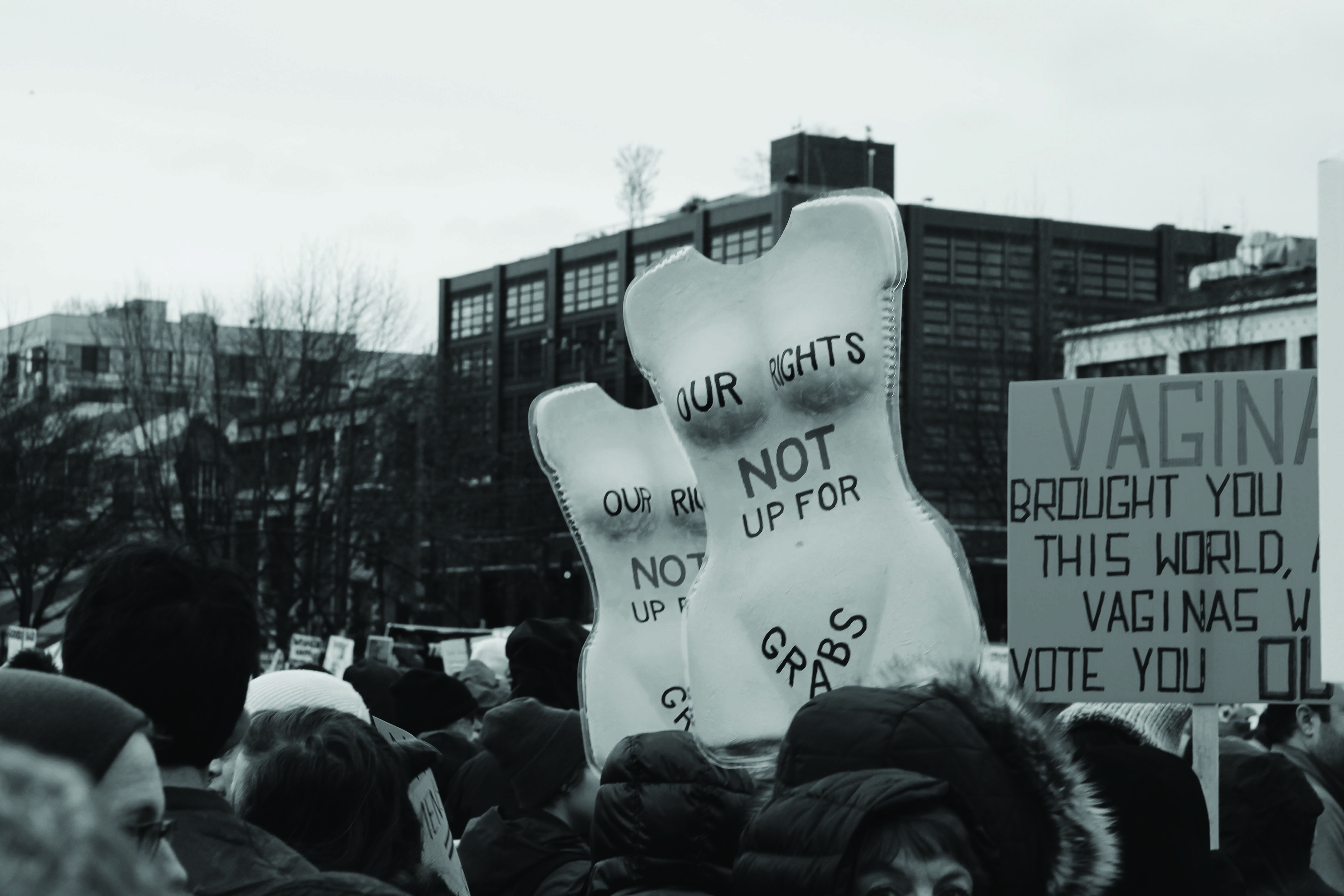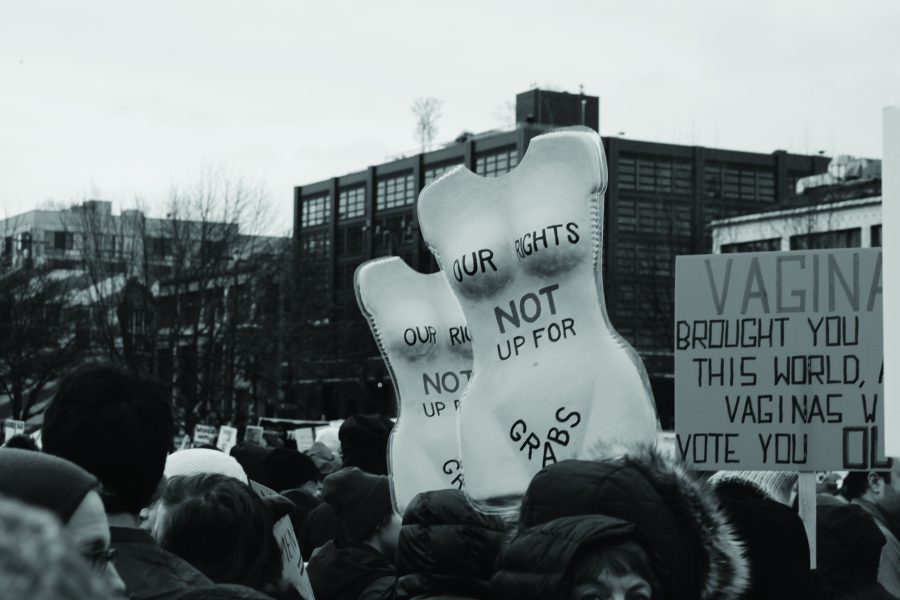Reacting to polarized U.S culture
Chris Harper
Staff Reporter
“I definitely have seen art as a political statement, often through expression of opinion or experience advocating for some significant change,” art student Ryan Kennedy remarked on the use of art in a political context.
The use of art to make a political statement can be traced back through several centuries of art history. Protest art can be found in abundance across continents, ages, social classes and political ideologies.

“A Roman sculpture, a German dada collage, and a newspaper cartoon about American government are three extremely different pieces, but they can all be so politically charged and have so much to say about their time,” art student Emilia Sunderland said.
In American politics, protest art and politics-focused art has made a resurgence in the time of women’s marches, “March for Our Lives” gun control protests, “Families Belong Together” immigration protests, and more conservative rallies such as “We the People” in Philadelphia earlier this month.
Many Seattle Pacific University art students have been paying attention to this facet of art and art history, and fully believe that art can be powerful when used in politics and protest.
“I definitely have seen art as a political statement!” Sunderland said. “As an art student who loves art history, I very much believe that art can change the world in every possible way.”
In 2018, artists such as Shepard Fairey, Hayley Gilmore, Jon McNaughton and many others are carrying on this tradition through the use of painting, drawing, sculpting and writing.
Due to the diversity and popularity of such pieces, many art students have seen and been inspired by political artwork at or before their time at SPU. Kennedy is one such student, who said that he has not done much political artwork, but plans to start soon.
His inspiration stems from Fairey’s poster art series, which has become culturally popular images representative of this time in American politics.
“I have felt very drawn to [Fairey’s] poster art series depicting empowered minorities, women, etc. The portraits are powerful and inspiring, as well as visually pleasing,” Kennedy said.
Artists such as Fairey are very popular on campus — Fairey’s artwork can be seen in dorm rooms, on laptop stickers and on desks.
However, Sunderland has a passion for history alongside her love for the arts. Therefore, it was only natural that she admires artists from the past who used their craft to make political statements.
“I’m very interested in the political work of Tove Jansson, a prominent Finnish artist in the 1900s. She dealt mostly in the fantasy realm as I do … but was also known for her anti-Nazi work … during the rise of the Nazi movement in Finland,” Sunderland stated.
Meanwhile, other art students have been drawn to other political artists to use their voices and speak out against things they disagree with, such as art student Elly Ha.
“I really was into Ai Wei Wei’s artwork,” Ha said.
Many students have been inspired by works of these artists that they so admire, and have since started creating their own political artwork about causes that matter most to them.
Kennedy, a Fairey fan and a photographer, was able to use these two inspirations to take protest photos about a passion that he and Fairey share.
‘The closest I have come to political art is photographing the women’s march and sharing the images in support of the cause,” Kennedy explained.
While Sunderland says her work is not usually strictly political, it is often politicized because it includes subjects of varying skin tones, genders and sexualities. She says that people are sometimes confused as to why she might paint a European goddess as non-white, or make other artistic choices of that nature.
“The mythological/folkloric beings that I paint are women that were idealized as the epitomes of beauty, and I think it’s high time we portray the epitome of beauty as a more diverse concept that reflects all women,” she explained.
Ha also said she has made some art that was inspired by politics; particularly, she drew inspiration from George Orwell’s dystopian novel “1984.”
“I drew a picture of a child sitting in a chair connected to a thing that said ‘Government’ on it. If it didn’t make it clear, that the government is practically controlling us,” Ha explained.
While art students’ experience with art as a political statement is clearly diverse, the one point that all seemed to agree upon was the presence of politics within both current and historical artwork.
According to Ha and several others, it comes down to expressing one’s beliefs and ideas.
“Art for me has always been a space for expression,” Ha stated. “People do art as a way to show or prove something.”

















































































